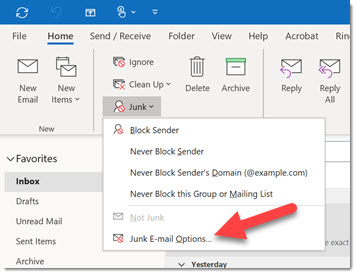
To allow or block messages based on payload (for example, URLs in the message or attached files), then you should use the Tenant Allow/Block List portal. The following anti-spam technologies are useful when you want to allow or block messages based on the message envelope (for example, the sender's domain or the source IP address of the message). Simply put, it starts by containing and filtering junk email. That's why Microsoft continues to invest in anti-spam technologies. Unmonitored junk email can clog inboxes and networks, impact user satisfaction, and hamper the effectiveness of legitimate email communications. The goal for EOP is to offer a comprehensive and usable email service that helps detect and protect users from junk email, fraudulent email threats (phishing), and malware.Īs email use has grown, so has email abuse. EOP anti-spam and anti-phishing technology is applied across our email platforms to provide users with the latest anti-spam and anti-phishing tools and innovations throughout the network. Microsoft's email safety roadmap involves an unmatched cross-product approach.

In Microsoft 365 organizations with mailboxes in Exchange Online or standalone Exchange Online Protection (EOP) organizations without Exchange Online mailboxes, email messages are automatically protected against spam (junk email) by EOP. For end-user topics, see Overview of the Junk Email Filter and Learn about junk email and phishing. IMPORTANT: The server that hosts your mailbox may have junk email filtering settings that block messages before they reach your mailbox.This topic is intended for admins. Messages received from any email address or domain in your safe senders and recipients list are never sent to your Junk Email folder. Safe recipients are recipients that you don't want to block, usually groups that you’re a member of. Safe senders are people and domains you always want to receive email messages from. In addition to Safe Senders and Recipients and Blocked Senders, you can use this setting to treat all email as junk unless it comes from someone included in your Safe Senders and Recipients list. For more details, see Blocked senders.ĭon’t trust email unless it comes from someone in my Safe Senders and Recipients list or local senders Messages received from any email address or domain in your blocked senders list are sent directly to your Junk Email folder. For more details, see Safe senders and recipients.īlocked senders are domains and people you don't want to receive email messages from. If you select this check box, email from any address in your contacts folders will be treated as safe. For more details, see Safe senders and recipients.

Add senders you trust and recipients that you don't want to block to this list.

Safe senders and recipients are domains and people whose email you don’t want diverted to your Junk Email folder. This filter is in addition to the junk email filter that’s been set by your administrator. Select this option if you want to use junk email filtering. Warning: If you select this option, email detected as spam by Exchange Online Protection will be delivered to your Inbox if the spam action set by your administrator is to move these messages to the Junk Email folder.


 0 kommentar(er)
0 kommentar(er)
